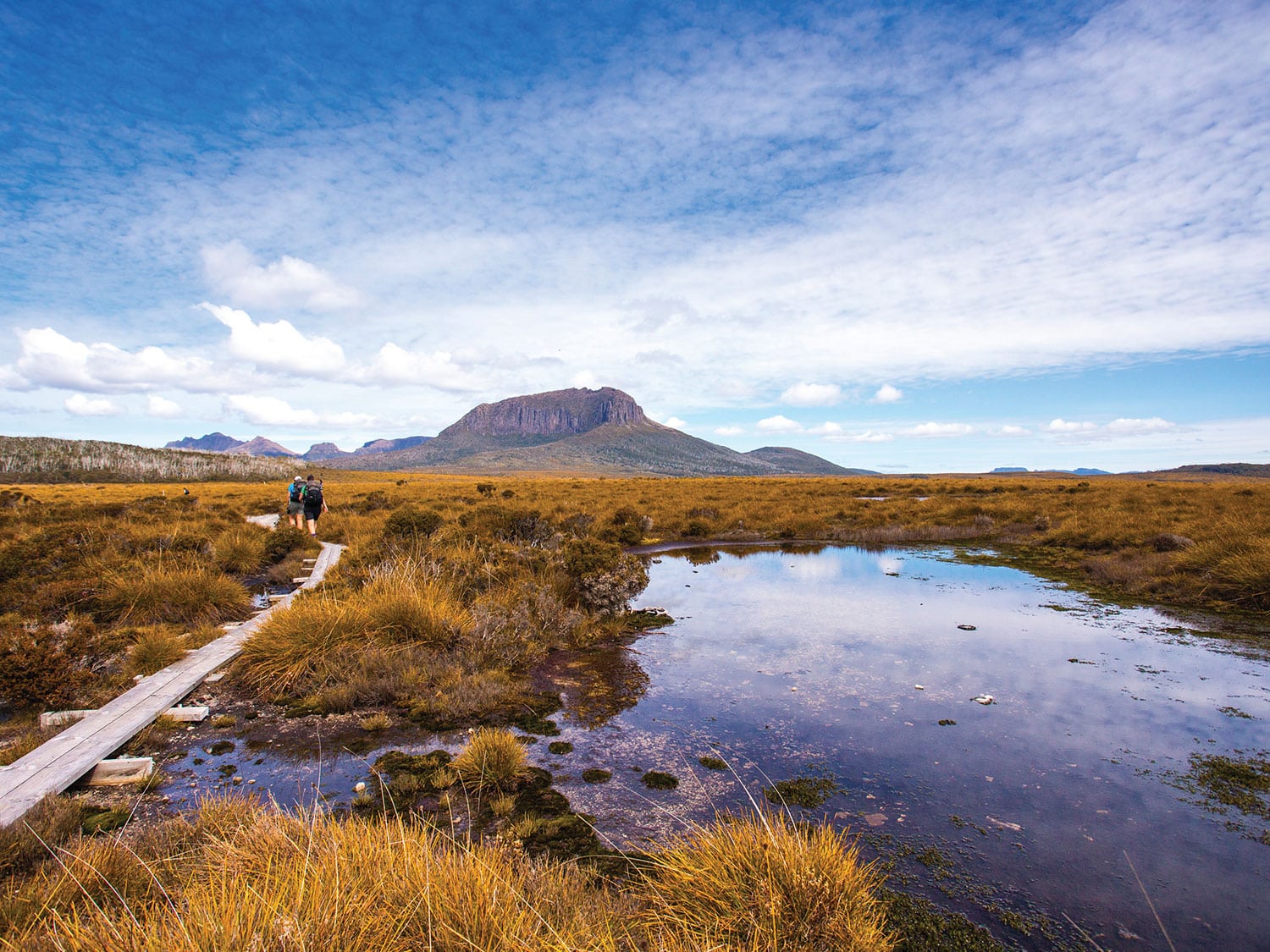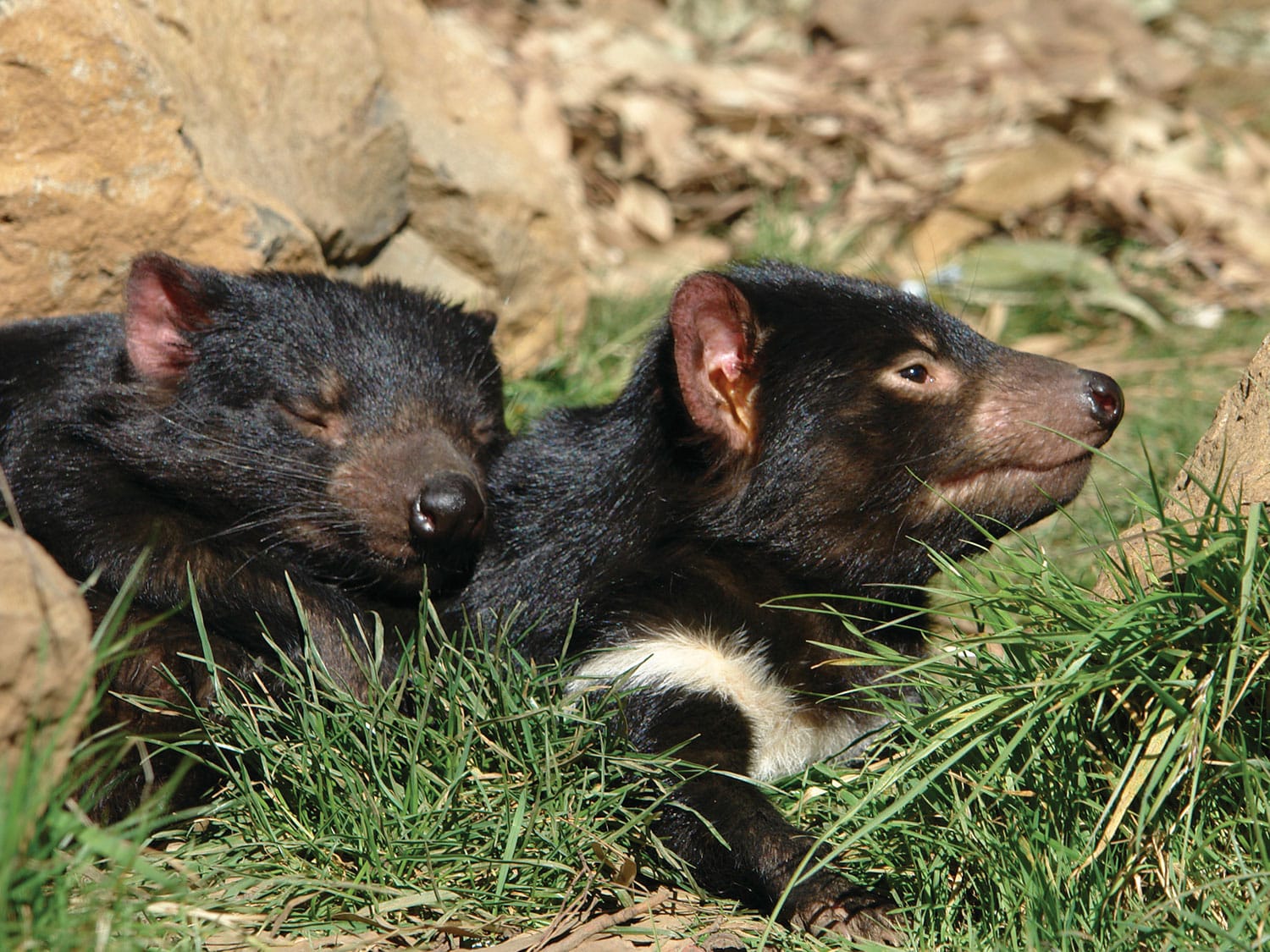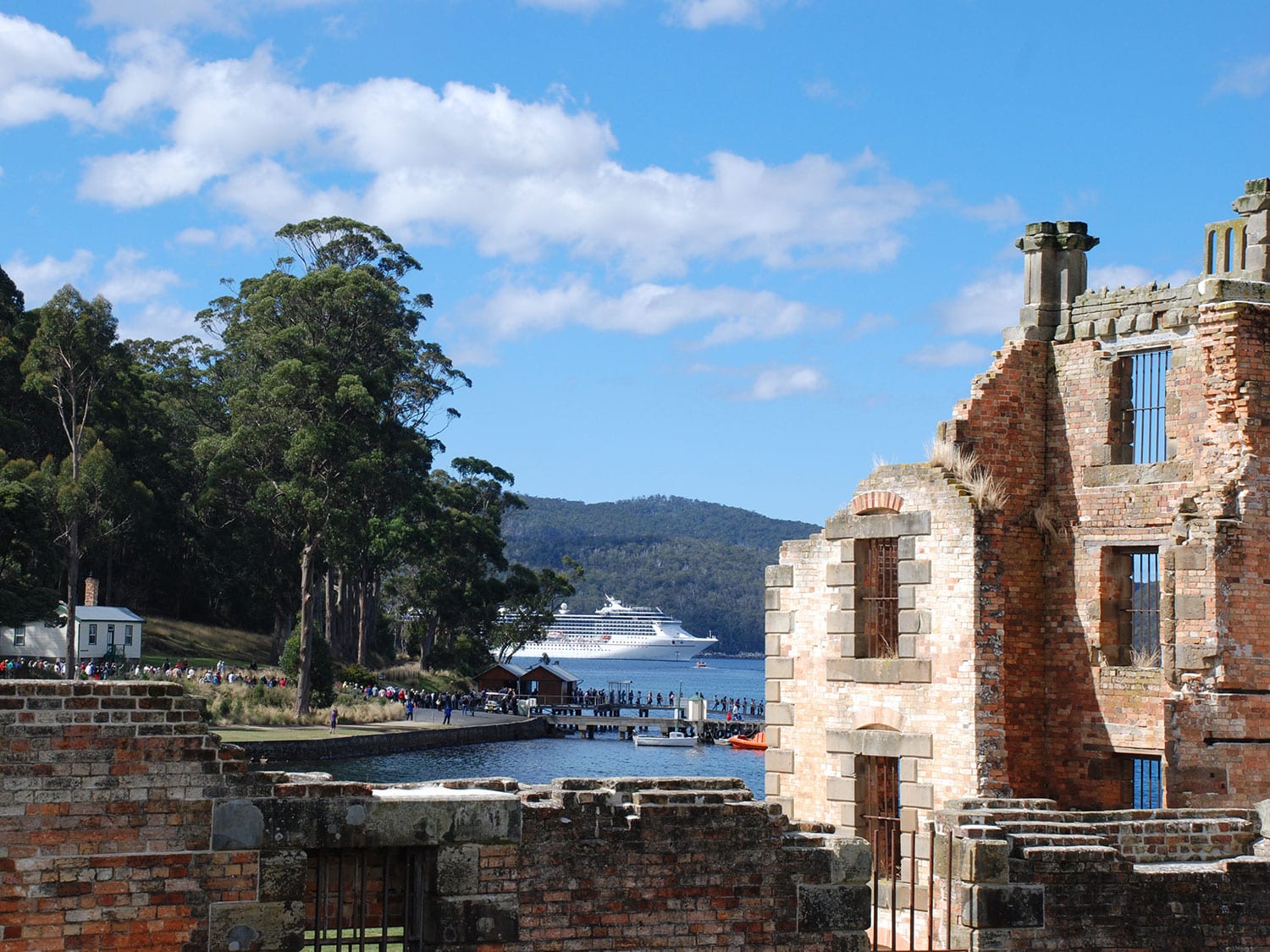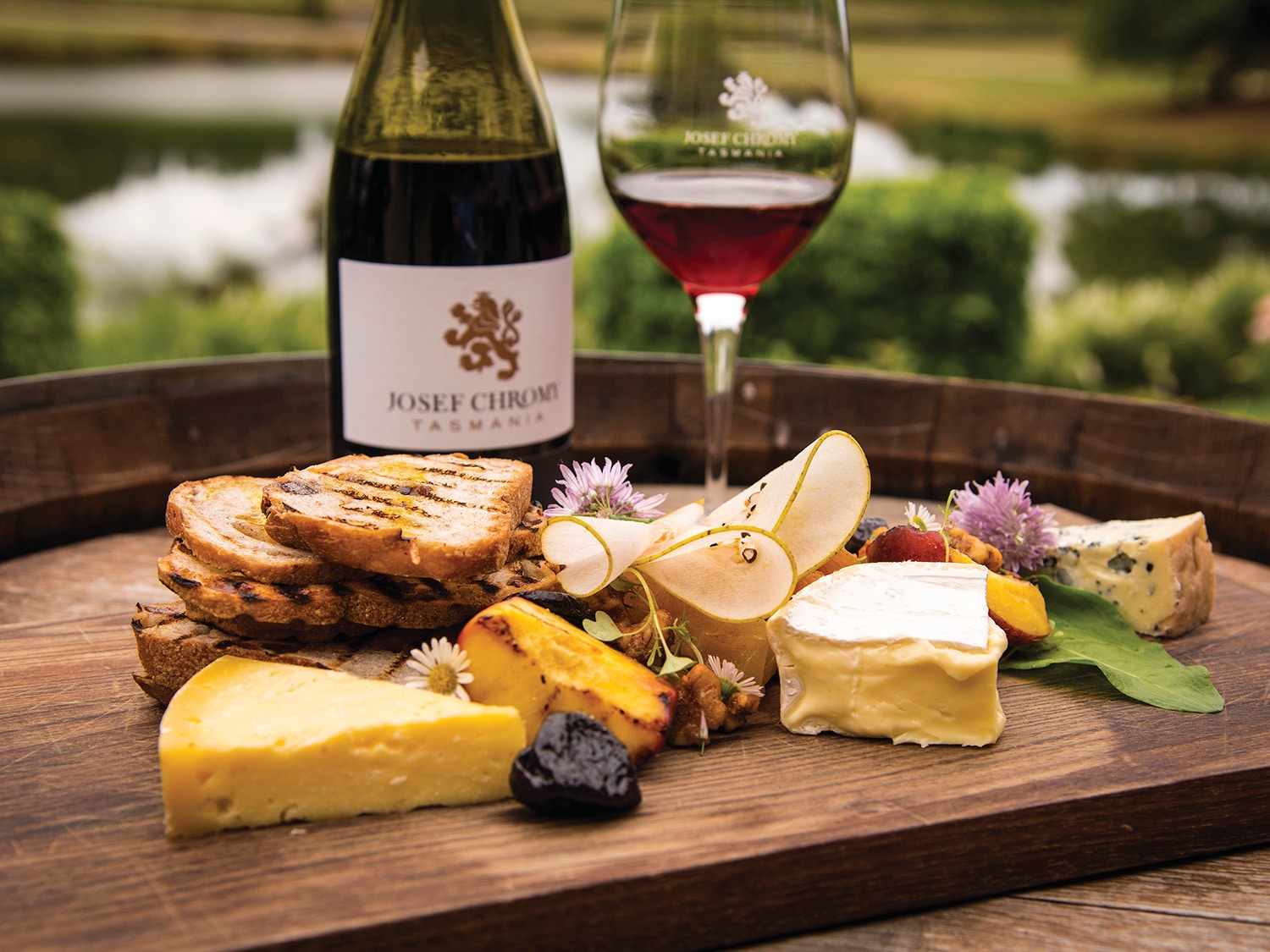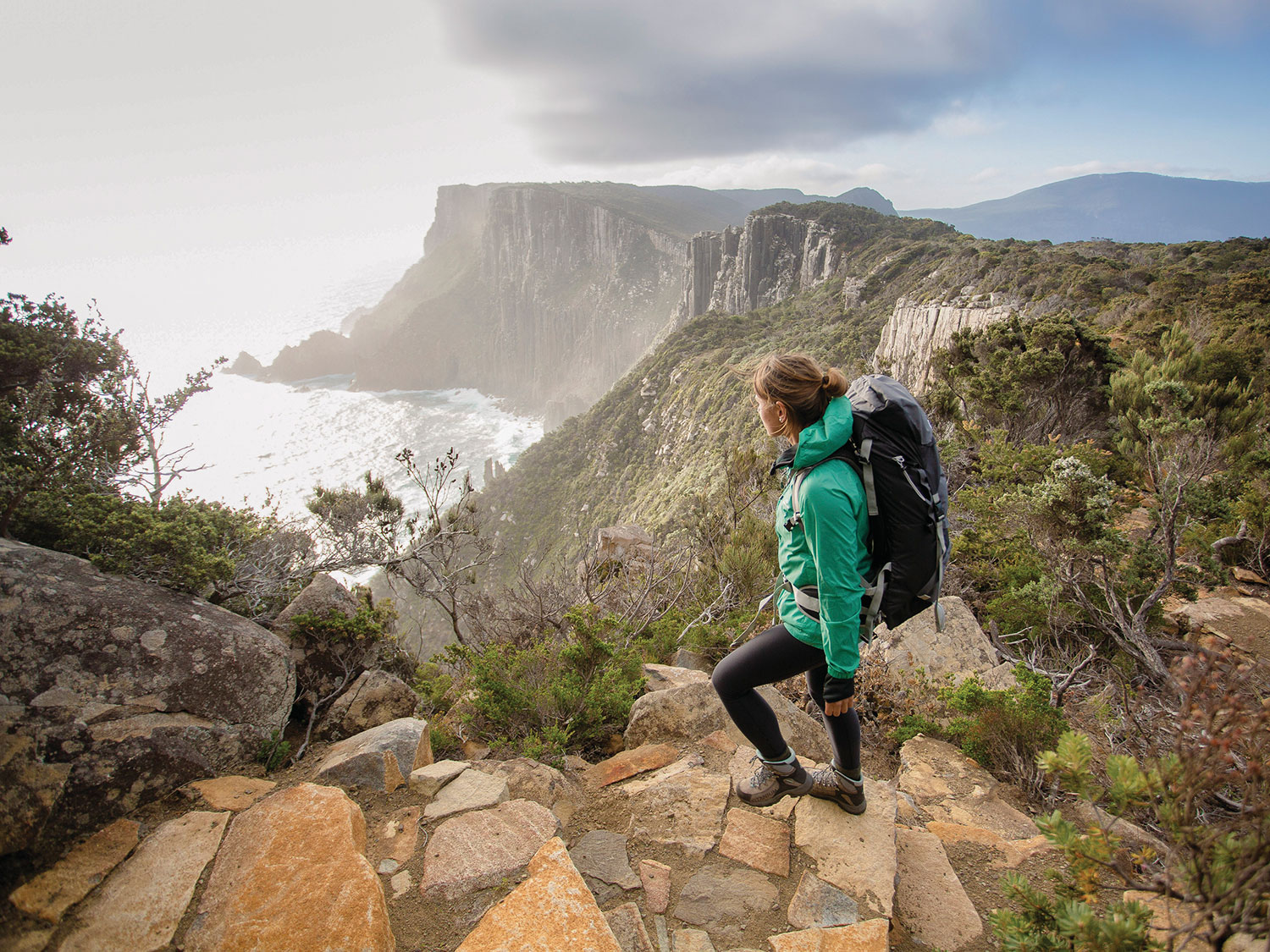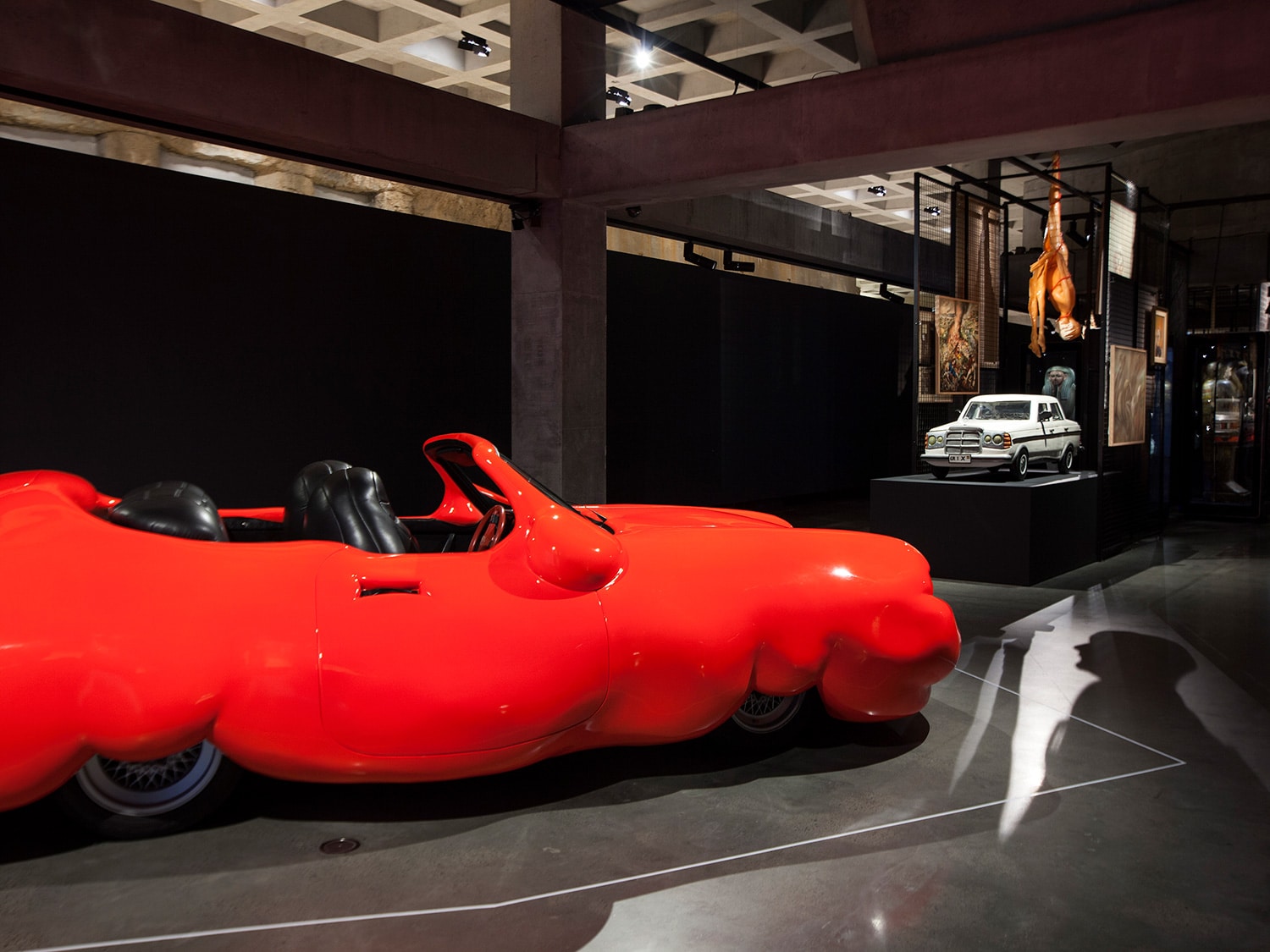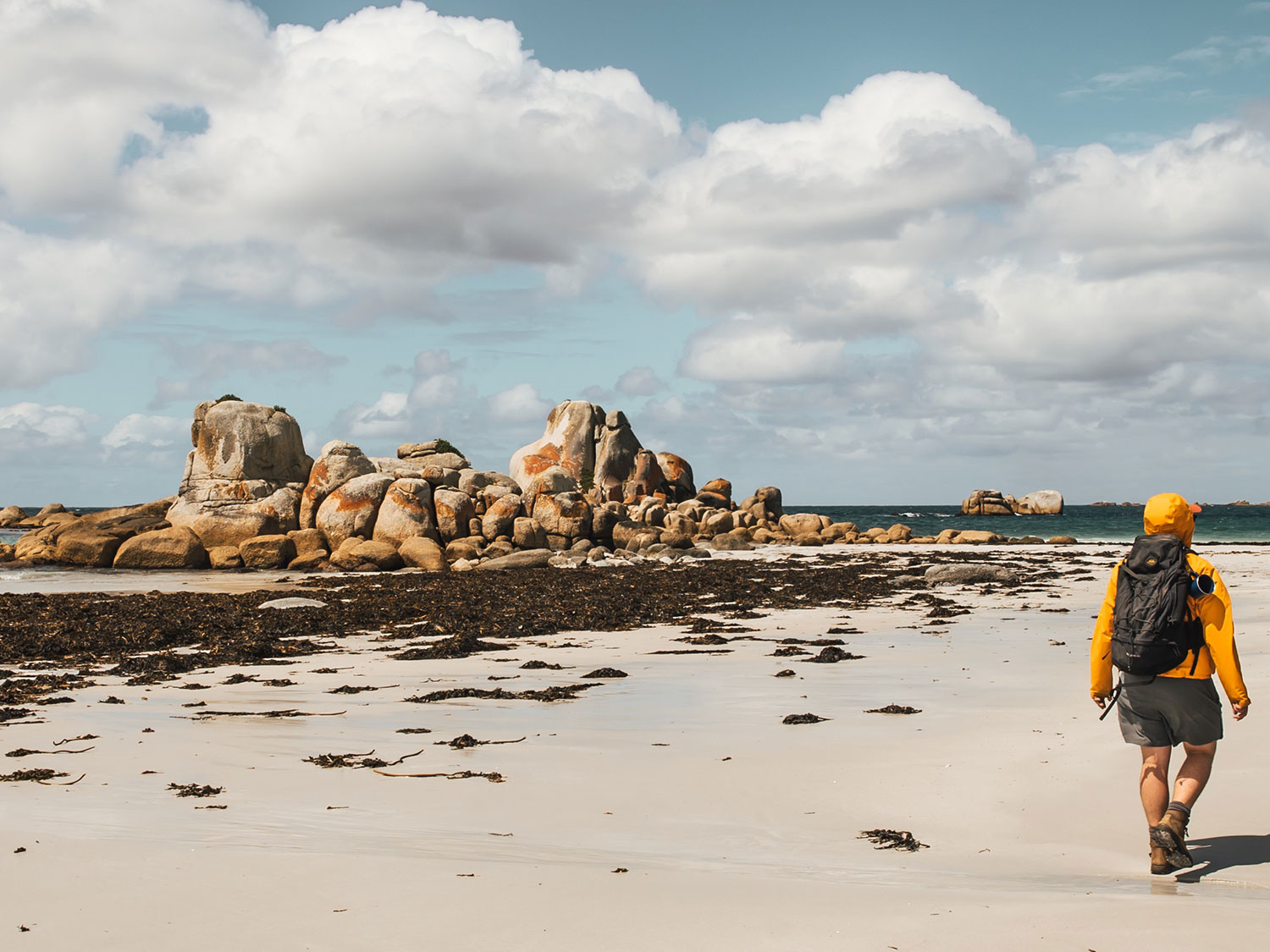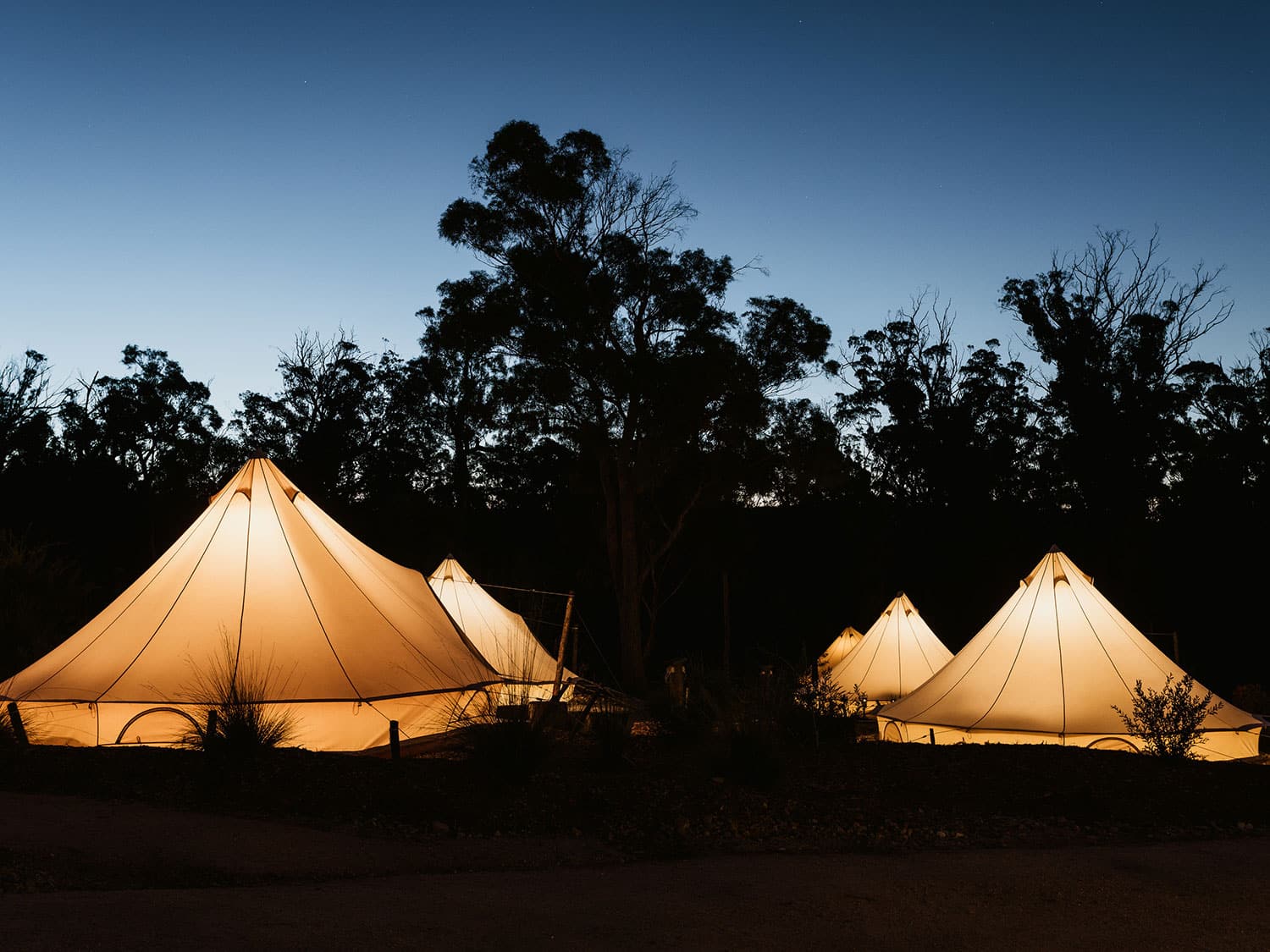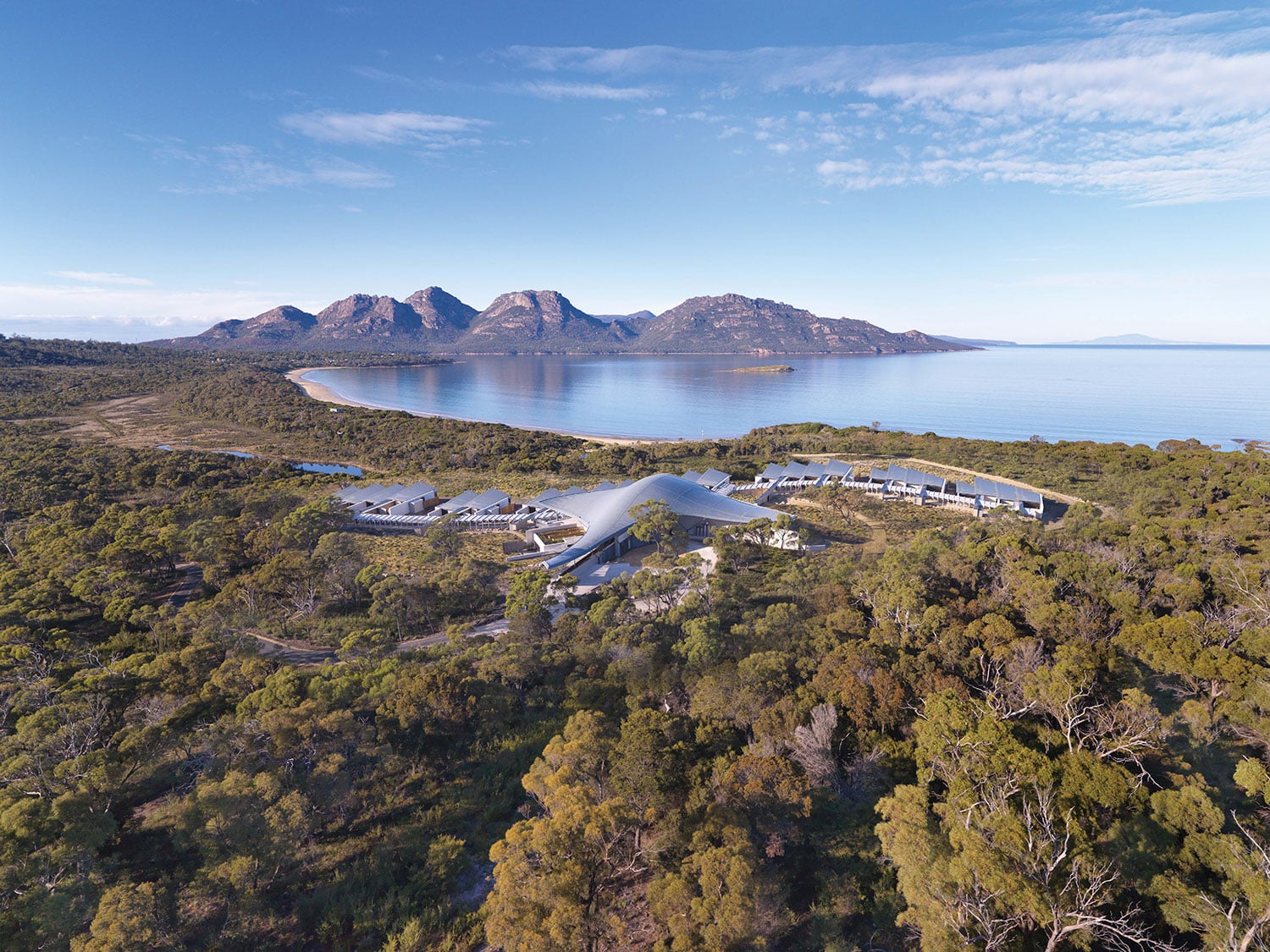8 Reasons To Visit Tasmania Right Now
The Australian island is well-known for beautiful scenery, fantastic food, and thrilling adventure—so, what’s the hold-up?
If pandemic-related changes to how we live and travel taught us anything it's that being surrounded by nature is therapeutic and that certain places definitely now rank higher on our must-visit list. Tasmania, the island state located off the south coast of eastern Australia, offers incredible opportunities for immersion in nature, so it might just be one of the destinations that's now firmly on your bucket list.
With spring and summer (October to March) in the Southern Hemisphere just around the corner, it's the perfect time to plan a visit to this wild and wonderful island that over the past decade has also evolved into a serious foodie destination. It's always been known for breathtaking scenery, heart-pounding adventure and easy access to unique creatures—from growling Tasmanian devils to scurrying penguins—and all these things and more can be enjoyed on an island that's a bit smaller than Ireland.
It’s full of fantastic wildlife
Australia is celebrated for an array of creatures found nowhere else on the planet, and many of them—kangaroos, wallabies, wombats, echidnas and quolls—reside in Tasmania, where 40 percent of the land is designated as national parks, reserves and World Heritage wilderness. But one of the most elusive and endangered of Australia's wild things is only found here: the Tasmanian devil.
A top destination for devil viewing—and for seeing all manner of indigenous wildlife—is Cradle Mountain-Lake St. Clair National Park. With a stay at Cradle Mountain Lodge, which offers access to hiking trails and wildlife nature walks, it's easy to learn about the mostly nocturnal species during a visit to the Devils @ Cradle Tasmanian devil sanctuary. It's located less than a mile from the lodge and runs a conservation and breeding program for not only devils but also two endangered species of quoll.
Another option is to book a tour on the Tasman Peninsula with the Tasmanian Nature Company, which leads groups on half-day "devil-tracker tours" and through what it calls the "Tasmanian Devil Unzoo."
If penguins are more your thing, some of the cutest ever come ashore at twilight near Bicheno on Tasmania's east coast and Bicheno Penguin Tours offers guided walks to see the nightly parade of resident fairy penguins, which are only a foot tall, from the sea to their rookery.
Also a top wildlife-rich locale on Tasmania's east coast is car-free Maria Island, which is pronounced ma-rye-ah and is home to Maria Island National Park, a haven for wallabies, wombats, Forrester kangaroos and even a population of Tasmanian devils released here and now thriving. Overnight camping is allowed and there's also bunk-style accommodation in the historic Penitentiary at Darlington.
The past springs to life at fascinating historic sites
There's plenty of history on Tasmania, including the 19th-century penal colony at Port Arthur, a World Heritage-listed site where British convicts were shipped to undergo imprisonment, hard labor and punishment—and almost 7,000 died here between the 1830s and 1870s. A variety of tours are offered, including lantern-lit ghost tours that explore the site's most infamous buildings and ruins.
The island's historic vibe is also on display in its capital city, Hobart, where the cobbled streets and historic Georgian sandstone warehouses of waterfront Salamanca Place host lively Saturday markets with 300+ vendors and a thriving culinary scene with dozens of restaurants and bars. Theatre Royale, built in 1837, is Australia's oldest continually operating theater and Battery Point is a wonderfully-preserved residential neighborhood with cottages, mansions (some now B&Bs) and churches that date to Hobart's earliest days.
Another charming spot to step back in time is Richmond, a historic town located about 20 minutes from Hobart. It's known for more than 50 heritage-listed colonial buildings and a photogenic sandstone bridge (Australia's oldest) that was built by convicts in the 1820s. Richmond is also home to Australia's oldest jail and its oldest Catholic Church (St. John's). And since the surrounding Coal River Valley is a fast-growing wine region, its burgeoning foodie scene means visitors can easily and enjoyably combine history and gastronomy.
Tasmania is a now foodie haven—complete with multiple tasting trails
Sparkling wine, whisky, craft beer, oysters, salmon, scallops, honey, hazelnuts, cider, truffles, cheese, gelato and more—the list of farm-to-fork tasting experiences has been one of the most exciting things to emerge in Tasmania over the past two decades. The island even has a Cradle to Coast Tasting Trail that stretches along its northwest coast and features almost 40 local producers.
But it's not the only trail for travelers whose favorite sense is taste. Tasmania also boasts a Cider Trail (apples are one of Tassie's major crops), a Tasmania Beer Trail (with more than 20 breweries), a Tasmanian Whisky & Spirits Trail with almost 20 distilleries (Tasmania's Sullivan's Cove has won best single-malt whisky awards several times since 2014), a Tamar Valley Wine Route with 30 cellar doors (including 20 offering sparking wine) and more. Delicious dining in innovative restaurants and pubs is available throughout Tasmania, but especially in Hobart, Launceston and the Tamar Valley.
Its landscapes are ideal for outdoor adventure
Tasmania visitors can easily burn off some the calories they consume by enjoying the many outdoor adventure activities for which this rugged island is known. Aside from scenic walks and epic hikes through World Heritage wilderness, options include mountain biking, kayaking, river rafting, caving and fly fishing.
One of the best-known hikes in Tasmania is the Overland Track, a challenging six-day hike within Cradle Mountain-Lake St. Clair National Park that covers more than 40 miles through glacier-carved valleys and fragrant eucalyptus forests. Easier day hikes to Cradle Summit and Crater Lake are also possible within the park. Another spot that combines a vigorous hike with scenic beauty is the Freycinet Peninsula, where a two- and three-day , 17-mile Freycinet Peninsula Circuit that offers views of the ocean and sandy beaches along with the craggy Hazards mountain range—and incredible panoramas of stunning Wineglass Bay. Again, day hikes are possible, too.
Adrenaline enthusiasts can book a guided rafting excursion on the legendary Franklin River (or several other rivers) while those who prefer a more leisurely paddle can kayak Coles Bay off the Freycinet Peninsula. Mountain bikers can hit the trails on Mt. Wellington, close to Hobart, or any of dozens of other purpose-built trails throughout island such as Blue Derby and St. Helens. Caving and rock-climbing are popular among the adventurous, too, while fly fishing the Meander River or Nineteen Lagoons combines skill, determination and peaceful surroundings.
Those who want to explore this incredible landscape by foot while still enjoying a luxury vacation can book a guided itinerary with Tasmanian Walking Company, which offers six walks around the island—including Cradle Mountain, Bay of Fires and Bruny Island—with accommodation in sustainably-built private lodges and meals made with locally sourced ingredients.
Hobart has a vibrant arts and culture scene
This city on Tasmania's southern coast has distinguished itself in recent years by promoting art and culture in an inviting mix of galleries and museums. Perhaps best-known is the avant-garde and often provocative MONA Museum of Old and New Art, which is located near Hobart and is the largest privately funded museum in the Southern Hemisphere. Visitors can experience owner David Walsh's AUS$110 million private collection of art and antiquities as well as cutting-edge special exhibitions. There are several dining and bar options onsite, too.
More traditional but equally compelling is the Tasmanian Museum and Art Gallery , which aims to safeguard Tasmania's natural and cultural heritage. Here you'll experience an array of First Peoples' art and culture from across the globe alongside colonial Tasmanian decorative arts and geological and zoological exhibits.
Art lovers can also visit the Salamanca Arts Centre, located in heritage buildings that are home to 13 different art spaces and performance venues. Salamanca Place also has some private art galleries showcasing works by Australian, Tasmanian and Aboriginal artists.
Beyond Hobart, a must-see for art appreciation is Sheffield, aka "the town of murals," which is located between Launceston and Cradle Mountain and has 140 public art murals on its buildings—and a self-guided audio tour.
Tasmania’s indigenous experiences are spiritual and immersive
Indigenous cultural experiences are abundant throughout Australia and Tasmania has several options for travelers interested in learning about the traditions of the country's Aboriginal peoples. Perhaps the most immersive experience is the Wukalina Walk, a four-day, three-night journey through the landscapes of Wukalina (Mt. William National Park) and Larapuna (Bay of Fires) with local Aboriginal guides and overnight stays in dome-roofed huts and a restored lighthouse.
In Launceston, visitors can also book a Kooparoona Niara Tour to venture into Cataract Gorge with a Trawlwoolway guide who will detail its and other nearby locales significance to three aboriginal nations.
Glamping and wellness retreats are easy to enjoy island-wide
Glamping, forest bathing, relaxing spa treatments and other wellness-focus activities are also part of the Tasmania experience. Top spots for glamping include Glamp Sandridge, Bay of Fires Bush Retreat and Domescapes Tasmania, while soothing your mind as you practice forest bathing by walking amid a peaceful maze of mossy trees is possible almost every day of your visit.
Indulgence in wellness at a full-service spa is also on the relaxation menu, from inviting day spas to upscale havens at a wilderness lodge such as Cradle Mountain Lodge's Waldheim Alpine Spa. Many treatments use local Tasmanian botanicals.
There are incredible places to stay
From charming B&Bs and rustic cabins to historic-meets-modern city hotels and ultra-luxurious wilderness lodges, accommodations in Tasmania can suit every travel style. A few notable options in Hobart include The Henry Jones Art Hotel, a five-star art-centric property located in a converted circa-1804 warehouse, and The Islington, an 11-room inn in a home that dates to 1847 and is furnished with fine art and antiques.
For a stay amid nature, there's Cradle Mountain Lodge and Pumphouse Point, both located in Cradle Mountain-Lake St. Clair National Park. Cradle Mountain Lodge offers a variety of suite and cabin accommodations set amid wooden walkways where wildlife sightings are abundant, while Pumphouse Point is an adults-only luxury retreat surrounded by a glacial lake. Nearby, Lemonthyme Wilderness Retreat is an award-winning boutique property set amid the rainforest with accommodations that include Luxury Spa Suites and romantic Wilderness Cabins set on poles amid the treetops.
Two other distinctive options are Peppers Silo Launceston, which is located in converted 115-foot-tall grain silos on the banks of the Tamar River, and Saffire Freycinet, an ultra-exclusive and architecturally stunning luxury resort overlooking the Hazard mountain range.
